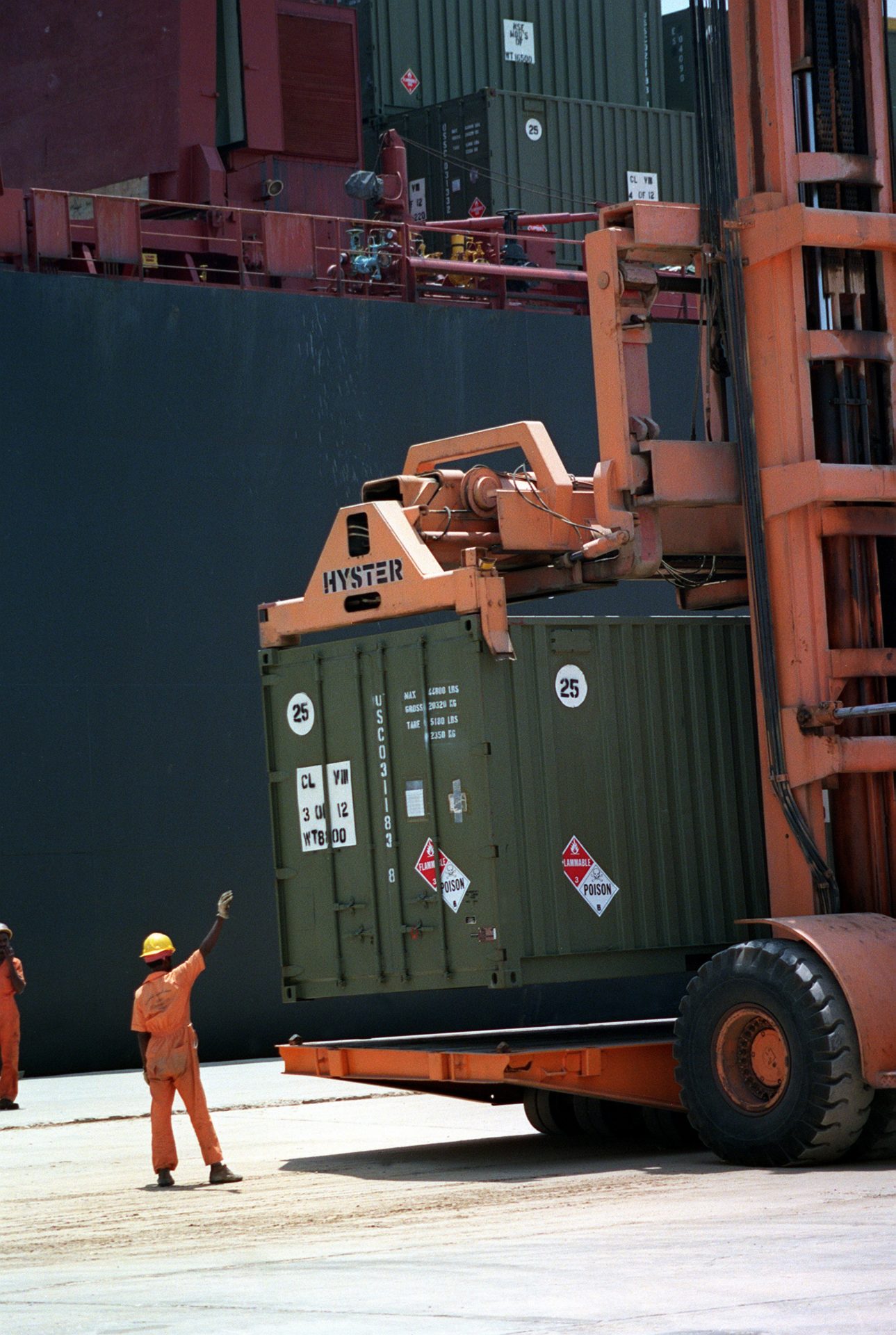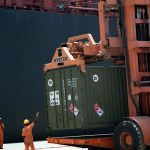What’s Happening at Ports During ILWU Negotiations?
As of Friday (July 1st), the master contract between the International Longshore & Warehouse Union (ILWU) and the Pacific Maritime Association (PMA) for all the dockworkers at West Coast ports is expired. This is a nervous time for shippers, to say the least. At any moment, ILWU members, whether a small local contingent or the entire union, could organize slowdowns or even strikes that could disrupt the movement of goods and badly damage shippers, who have already suffered much over the last couple years.
During the 2014-15 contract negotiations, such slowdowns occurred. It cost the U.S. economy billions. The union and PMA have said they’re planning to keep cargo moving through negotiations, but it’s clear the issue of automation is a tough one, and many expect negotiations to turn contentious over it. There is no certainty that damaging labor slowdowns won’t happen.
ILWU Steps Up Its Fight Against Automation
At the beginning of May, the automation fight went public as the PMA released a study showing automation made port terminals more productive, helped them handle more shipments, and actually created more union jobs. The ILWU immediately refuted that but not very convincingly.

As June was reaching an end, the ILWU did a better job of publicly claiming automation costs union jobs by releasing a report the union commissioned on the topic.
Bill Mongelluzzo reported on the study in the Journal of Commerce (JOC):
According to the report, automation at TraPac and LBCT eliminated 535,848 annual person-hours of dock work and resulted in $41.8 million in annual wages not earned. The loss of income from dockworkers who are replaced by future automation projects at other terminals will have a knock-on impact in the communities close to the ports in the form of reduced spending on goods and services.
“The follow-on effects from automation would eliminate 3,818 year-round, non-port jobs that are currently supported by the consumer spending of dockworkers,” the study said. “This would be the result of $743.9 million in lost purchases in California’s economy.”
I don’t know the merit or accuracy of the ILWU’s report entitled “Someone Else’s Ocean“; however, the ILWU is at least presenting numbers. The report suggests a tax or fee on any new automation projects at the Ports of Los Angeles and Long Beach to offset the “public costs” from dockworker jobs lost because of automation, according to Mongelluzzo’s article.
Unfortunately, over the last couple years, we’ve all been suffering through the public costs of the unions’ long fight against automation. The lack of automation at U.S. ports has caused them to be less efficient than many of their counterparts around the world. This helped make U.S. ports unable to handle the long surge in imports caused by lockdowns and stimuli during the pandemic. The ILWU and ILA have a share in the responsibility for the supply chain disruptions of the last couple years.
Perhaps in an attempt to get shippers on their side, the ILWU’s report also “suggests that the San Pedro Bay ports levy a surcharge on containers that are returned empty to overseas ports rather than being filled with export cargoes, with the revenues to be used to offset public costs that result from underutilization of California’s export capacity,” reports Mongelluzzo.
That is actually an interesting idea that may be worth looking into. U.S. exporters, particularly U.S. agricultural exporters, have been treated unfairly over the course of the pandemic when it has come to being provided with shipping containers and services for their exports over the course of the pandemic.
East Coast Ports See Boom Amid Cargo Diversion from West Coast
Shippers have already been rerouting cargo through East Coast ports from the West Coast ones for fear of labor strife disruption.
Lori Ann LaRocco reports in American Shipper:
The East Coast ports are benefitting from the diversion of trade away from the West Coast out of fear of a labor strike.
Bethann Rooney, executive director for the Port Authority of New York and New Jersey, told reporters Friday the flow of trade originally bound for the West Coast and redirected to their port has been steady.
“Through April 2022, container volume was up 11.2% over the same period last year,” Rooney said. “Approximately 6.5% of the total volume during that period represented cargo that was rerouted from the West Coast.”
Rerouting to East and Gulf Coast ports was one of the three ways I suggested a year ago that shippers could protect their supply chains from likely ILWU port disruption on the West Coast. The other strategies were importing and exporting early and considering a change in goods sourcing to avoid West Coast ports.
All of these protective measures require early planning. At this juncture, rerouting to East and Gulf Coast ports is probably the most doable for shippers who have not yet implemented any of these ideas. However, simply moving goods through the East Coast is not a panacea.
Asia to East Coast Shipping Suffers Reliability Dip
Teri Errico Griffis reports in the JOC that reliability of shipping from Asia to US East Coast ports has suffered a dip in reliability amid cargo diversion from the West Coast. Interestingly, US WC shipments actually made gains in that department. Griffis writes:
Asia to the US West Coast showed a slight gain in on-time performance, rising to 21.9 percent in May from 21 percent in April, according to Sea-Intelligence Maritime Analysis’ latest liner performance report. Asia to the US East Coast, on the other hand, broke an upward trend since February and fell to 19.8 percent from 21.7 percent. Reliability is measured by vessels arriving within one day of their expected schedule.

Let’s not kid ourselves here. Carriers, which have been notorious for unreliability long before I started writing about them over a decade ago, are not killing it on either coast when it comes to delivering goods on time. If your business delivered when it said it would only a little over or a little under twenty percent of the time, you’d probably be out of business.
We’ve grown so accustomed to ocean freight carriers failing to be on time with deliveries that such low performance numbers are shrugged right off. Additionally, it’s not all on the carriers. Ports falling behind puts everything behind when it comes to delivering imports and exports. It’s certainly not comforting to see reliability go in the wrong direction at East Coast ports as they pick up extra market share from fear of more disruption at West Coast ports.
Griffis writes:
East Coast ports have grappled with increased anchorage over the last few months as the fear of West Coast labor disruption has led some shippers to shift their cargo elsewhere. The Port of New York and New Jersey, for example, reached a record high with 21 vessels at anchor June 20, while a total of 107 container ships needed to wait to dock at some point during the month, Bethann Rooney, port director at the Port Authority of New York and New Jersey, told JOC.com Friday.
“It is concerning,” Rooney said, noting ships waited an average 4.5 days in June.
New York-New Jersey import volume is up 9.7 percent year-to-date, according to PIERS, a sister company of JOC.com within S&P Global. Rooney said 6.5 percent of the cargo that landed in New York-New Jersey through the first five months of the year was typical West Coast cargo that has been rerouted.
The Port of Savannah, which by May had cleared out its backlog of approximately 30 ships at high, also saw its anchorage tally jump back up to 25 in recent weeks, according to Sea-Intelligence.
A little surprising is that ocean freight carriers’ global reliability actually improved month over month in May. That was up to 36.4 percent from 34.4 percent and, according to Sea-Intelligence per Griffis’s article, is the highest reliability level ocean freight carriers have had since June of 2021.
Watching and Hoping
We’re getting into the peak season for shipping now and are stuck with a very uneasy feeling about where things stand. Most shippers are watching the news when it comes to the ILWU contract negotiations and hoping they don’t go sideways. Inflation is out of control with no signs that it will be reeled in, adding more uncertainty to the future.
One thing you can know is that we here at Universal Cargo are always keeping a close eye on the events affecting international shipping and are always ready to do everything we can to help your business navigate it all successfully.




